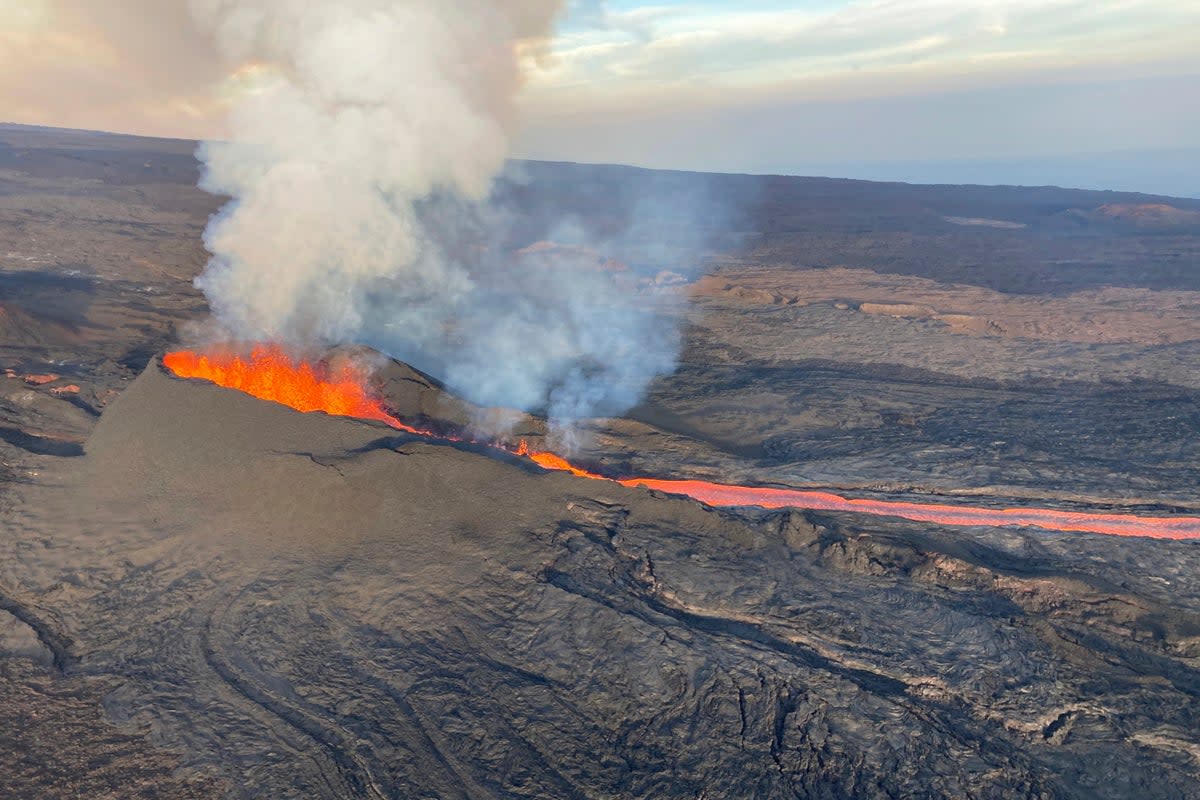‘Mind-blowing’ hidden network of magma chambers found under Hawaii’s volcanoes

A massive complex of flat, interconnected magma chambers has been found by scientists deep beneath volcanoes in Hawaii that seem to be responsible for a swarm of unexplained tiny earthquakes felt on the Big Island over the past seven years.
Data gathered from seismic stations was used to chart out the structure of these pancake-like chambers, called “sills” and were mapped with “never-before-seen precision” by researchers, including those from the California Institute of Technology (Caltech) in the US.
The findings, published on Thursday in the journal Science, demonstrate that these magma chambers, which appear to be at depths ranging from around 36-43km, link to at least two of the island’s active volcanoes – Mauna Loa and KÄ«lauea.
“We were just looking at it, and it was just mind-blowing, it really was. Ever since then, I can’t get the image of it out of my head,” study co-author and geophysicist Zachary Ross told The Washington Post.
In the study, scientists assessed data from over 192,000 small temblors – less than magnitude 3.0 – that occurred over the period from 2018 to mid-2022.
Researchers also mapped out over a dozen sills stacked on top of one another, monitored the progress of the magma in these sills as it pushed upward through them and link it to KÄ«lauea’s activity.
But since the study period ended in May 2022, they could not say if magma flow in these chambers led to the 27 November eruption of Mauna Loa – the largest active volcano on the planet.
“Before this study, we knew very little about how magma is stored and transported deep beneath Hawai‘i. Now, we have a high-definition map of an important part of the plumbing system,” study co-author John D Wilding said in a statement.
“We know pretty well what the magma is doing in the shallow part of the system above 15km depth, but until now, everything below that has just been the subject of speculation,” he says.
The study found that the sills tend to be around 300m thick, separated by a distance of about 500m, with the largest of them about 6-7km.
“Volcanic earthquakes are typically characterised by their small magnitude and frequent occurrence during magmatic unrest,” said Weiqiang Zhu, another author of the study.
Using machine learning, scientists said they could gain “an unprecedented ability” to separate signal from noise while analysing the data to clearly identify earthquakes and their locations to map the sills.
The technique helped scientists identify small earthquakes from the data that may not stand out to the human eye on a seismogram.
“It’s analogous to taking a CT [computerized tomography] scan, the way a doctor can visualise the inside of a patient’s body. But instead of using controlled sources with X-rays, we use passive sources, which are earthquakes,” Dr Ross explained.
With the help of machine learning, researchers could catalog about 10 times as many earthquakes as was previously possible, and pinpoint their locations with a margin of error of less than a kilometre.
“We are excited about recent advances in machine learning, particularly deep learning, which are helping to accurately detect and locate these small seismic signals recorded by dense seismic networks,” Dr Zhu added.
However, it remains unclear whether the sills beneath Hawaii are unique to it or if such subvolcanic structures are common.
Researchers are also unsure how the magma’s movement triggers the tiny quakes.
They speculate that the injection of a lot of magma into a space can create a lot of stress that may trigger such quake swarms.

